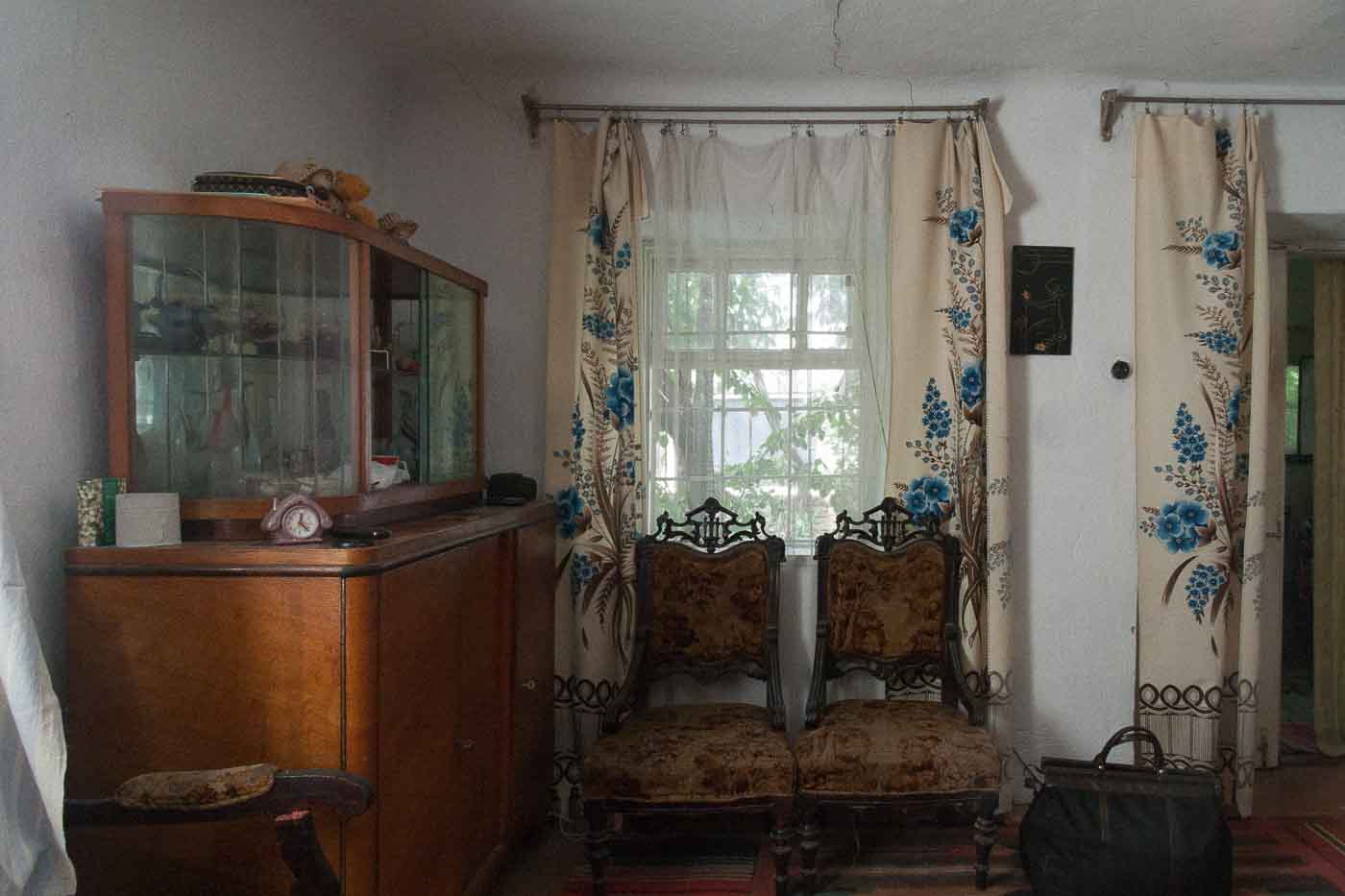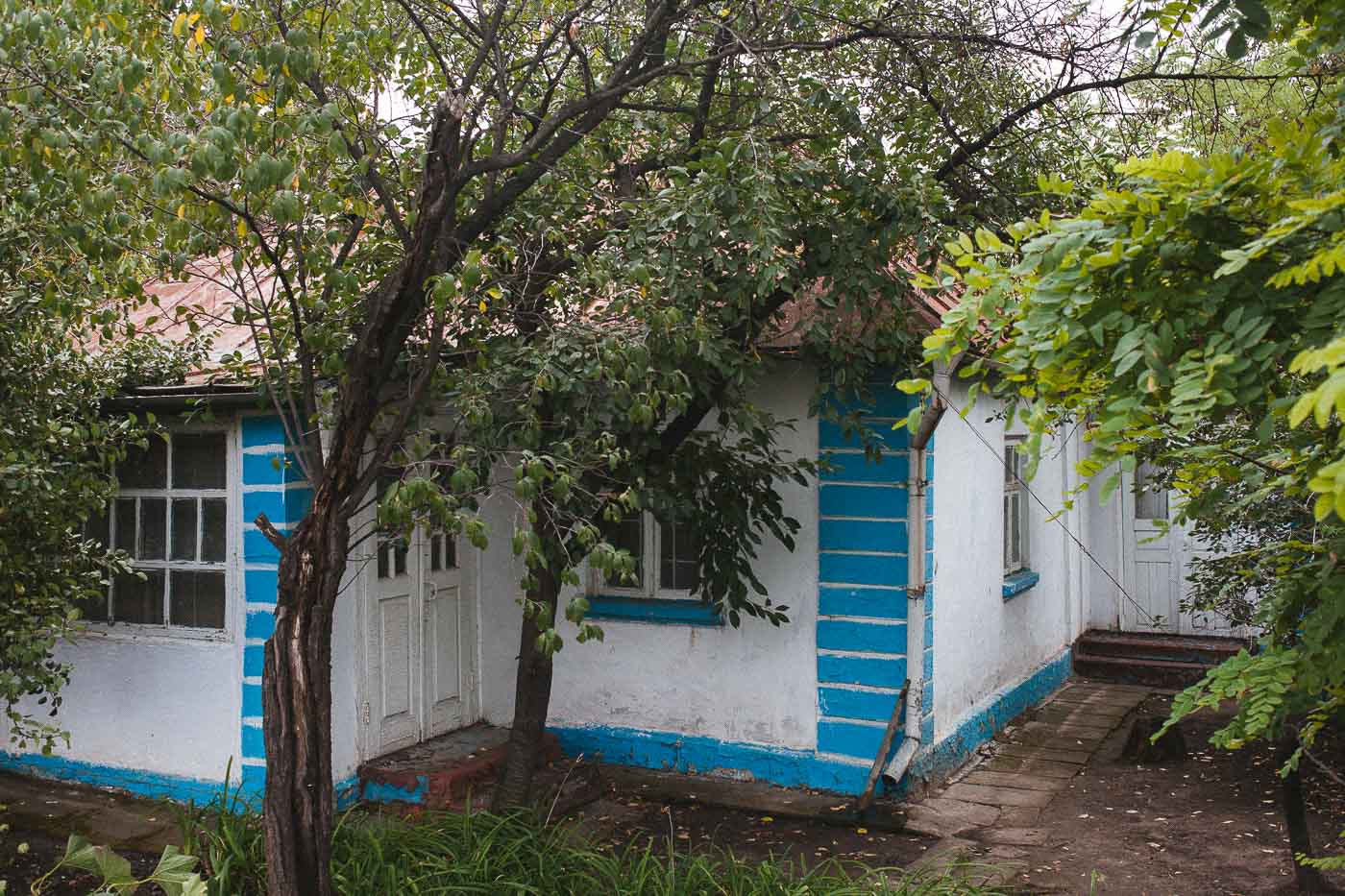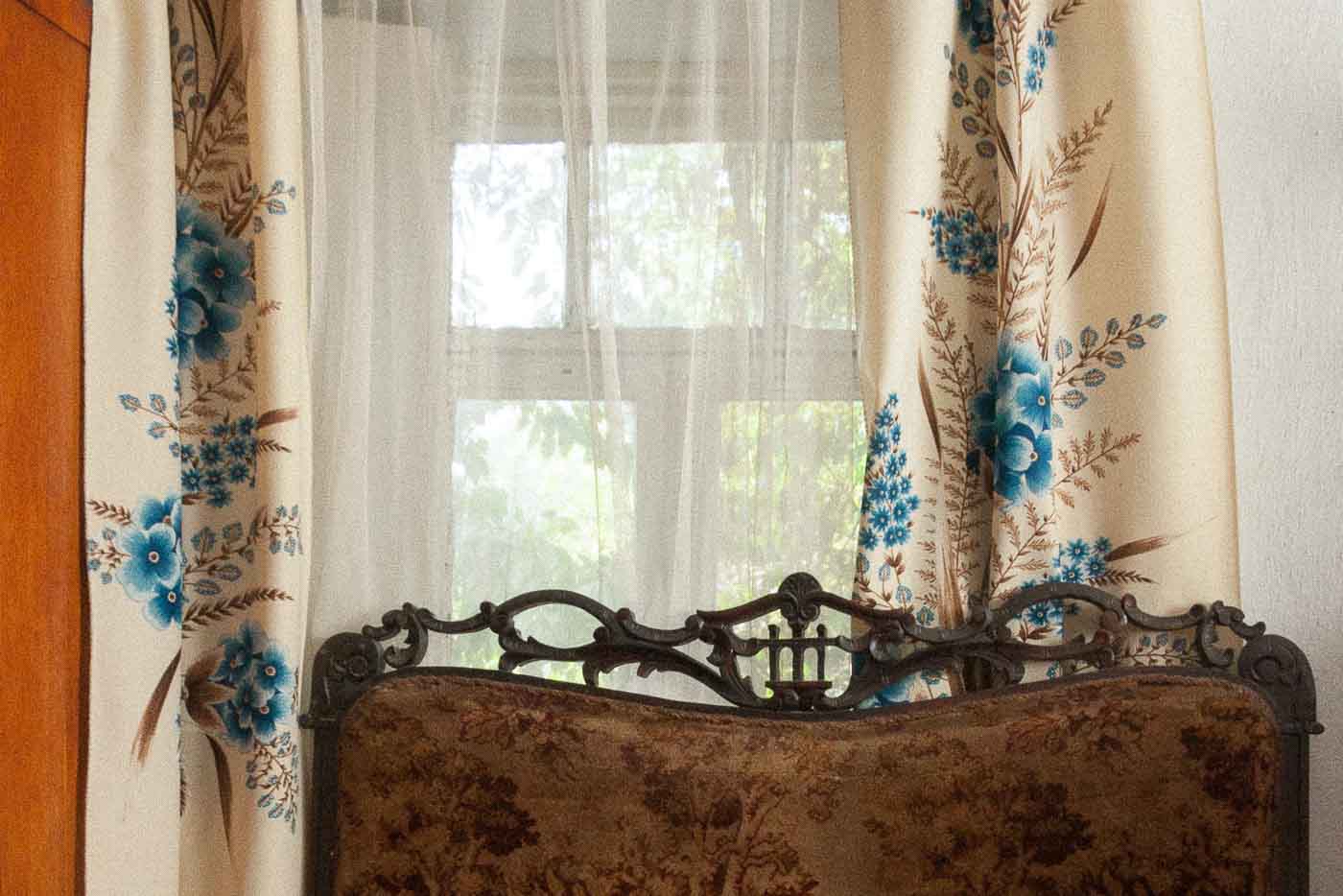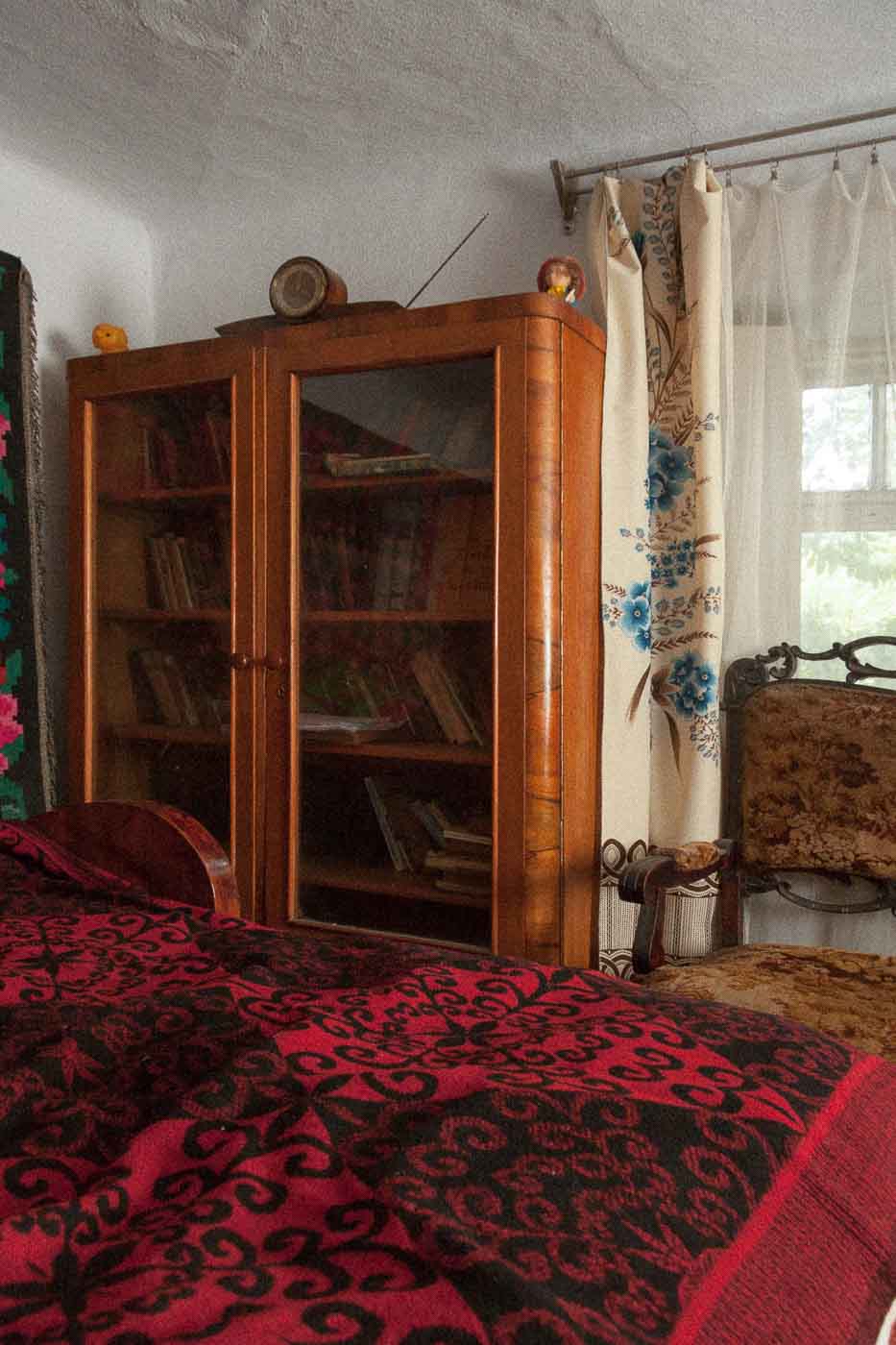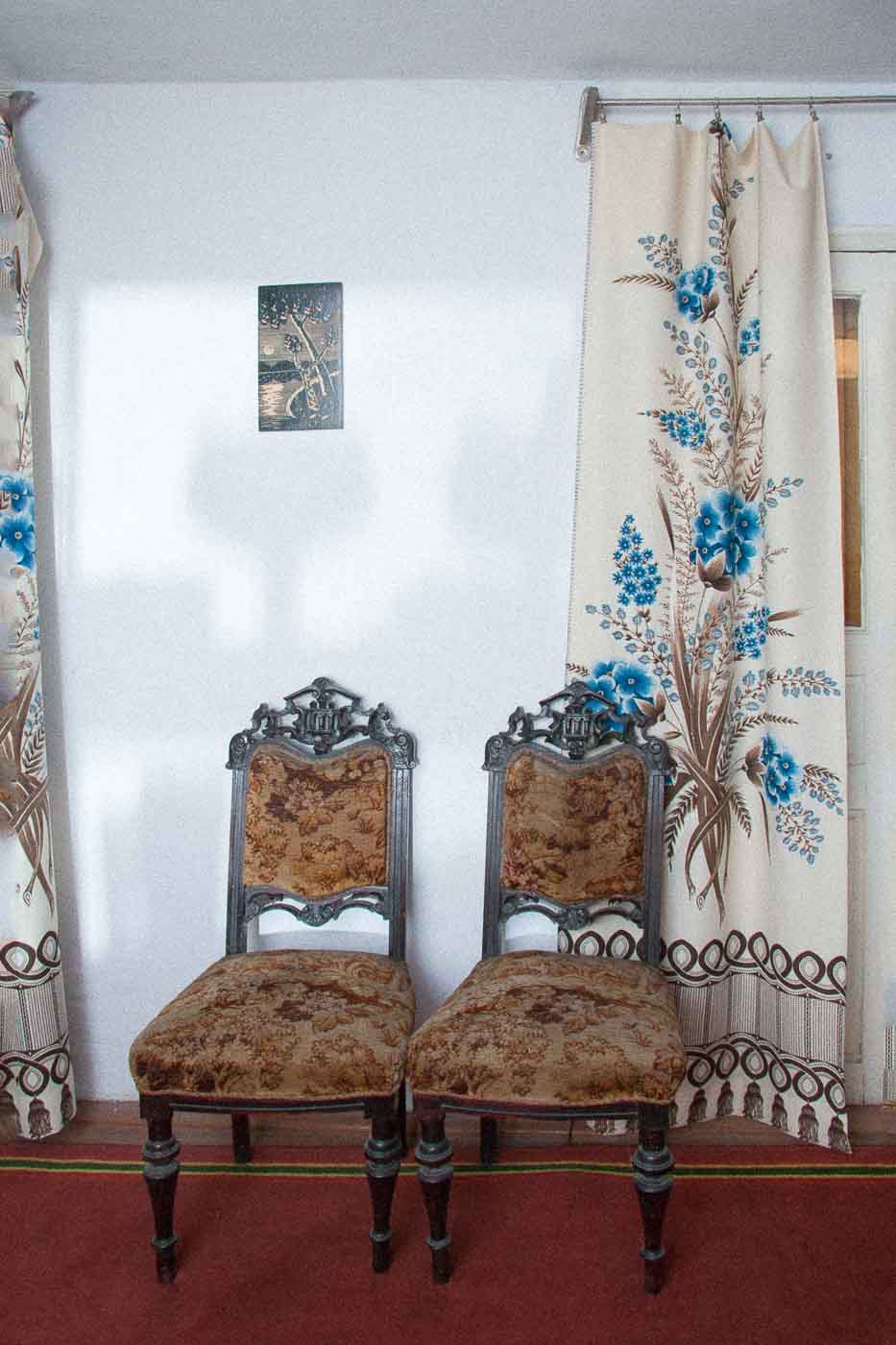In small regional museums, it is interesting to take into account a period that finalizes a museumification of everyday life, and the border by which the contemporaneity begins. It is clear that the last industrial and agricultural achievements documentation ended somewhere near 1991 when the USSR collapsed and museum development practically ceased for at least ten years.
Sometimes cheap inkjet photos telling about further official events of independent Ukraine appear. These cases are rare. Moreover, installations of places where well-known persons lived and worked are usually dated not later than the beginning of the 20th century.
By 2011 my grandmother’s residential house was unoccupied for some years; the garden and vineyard were cut down, and everything was in the state of gradual collapse and disappearance. Old furniture in the rooms of her house had some value for the Yampil regional museum researchers, and finally, the house had been opened for visitors at Town day and a week after it with the museum’s support. The building itself was erected as a typical 1940s’ project paid by the monetary help given to WWII veterans after the war. There are three or four similar houses in Yampil district.
